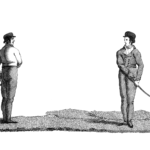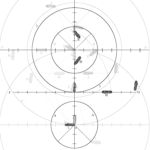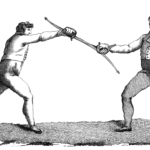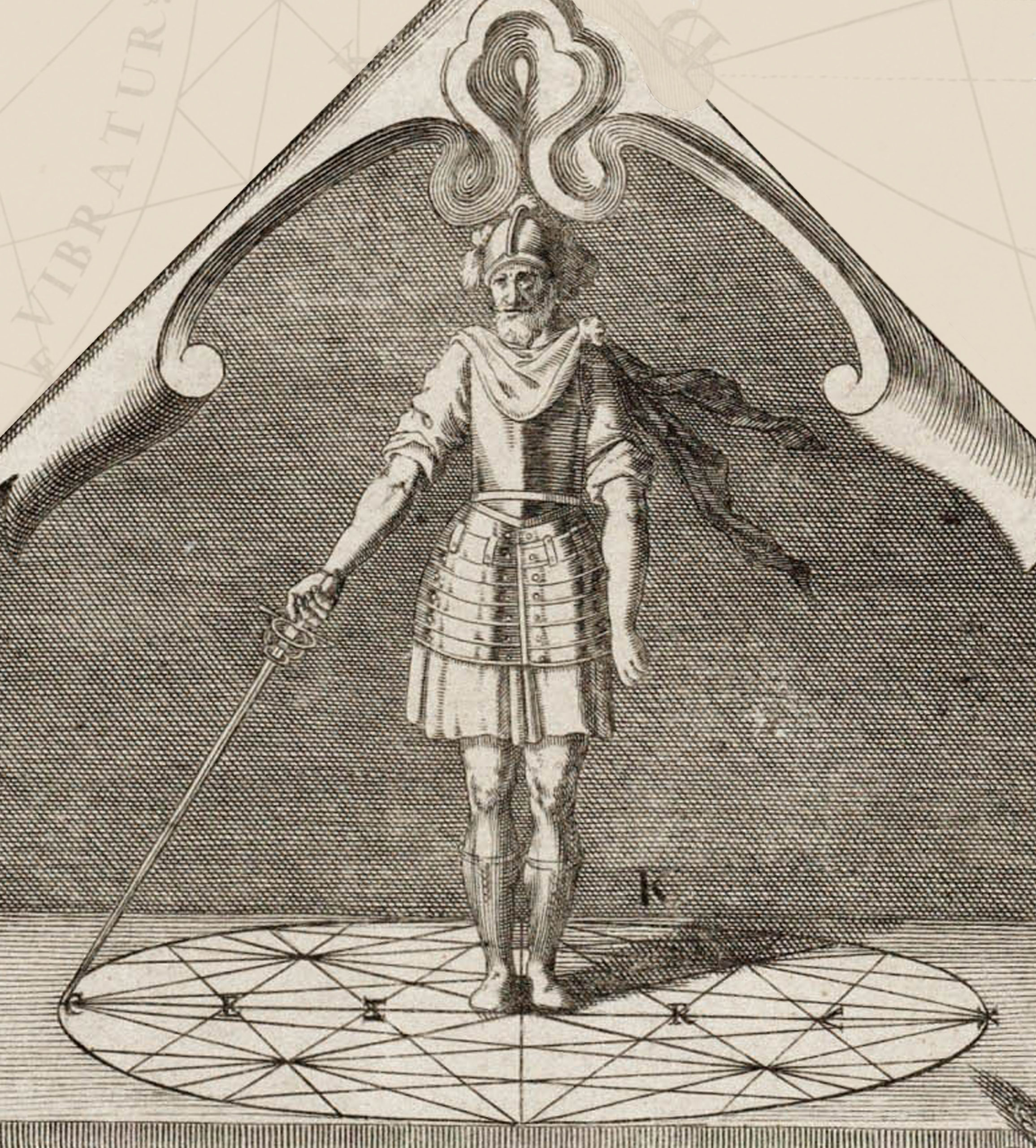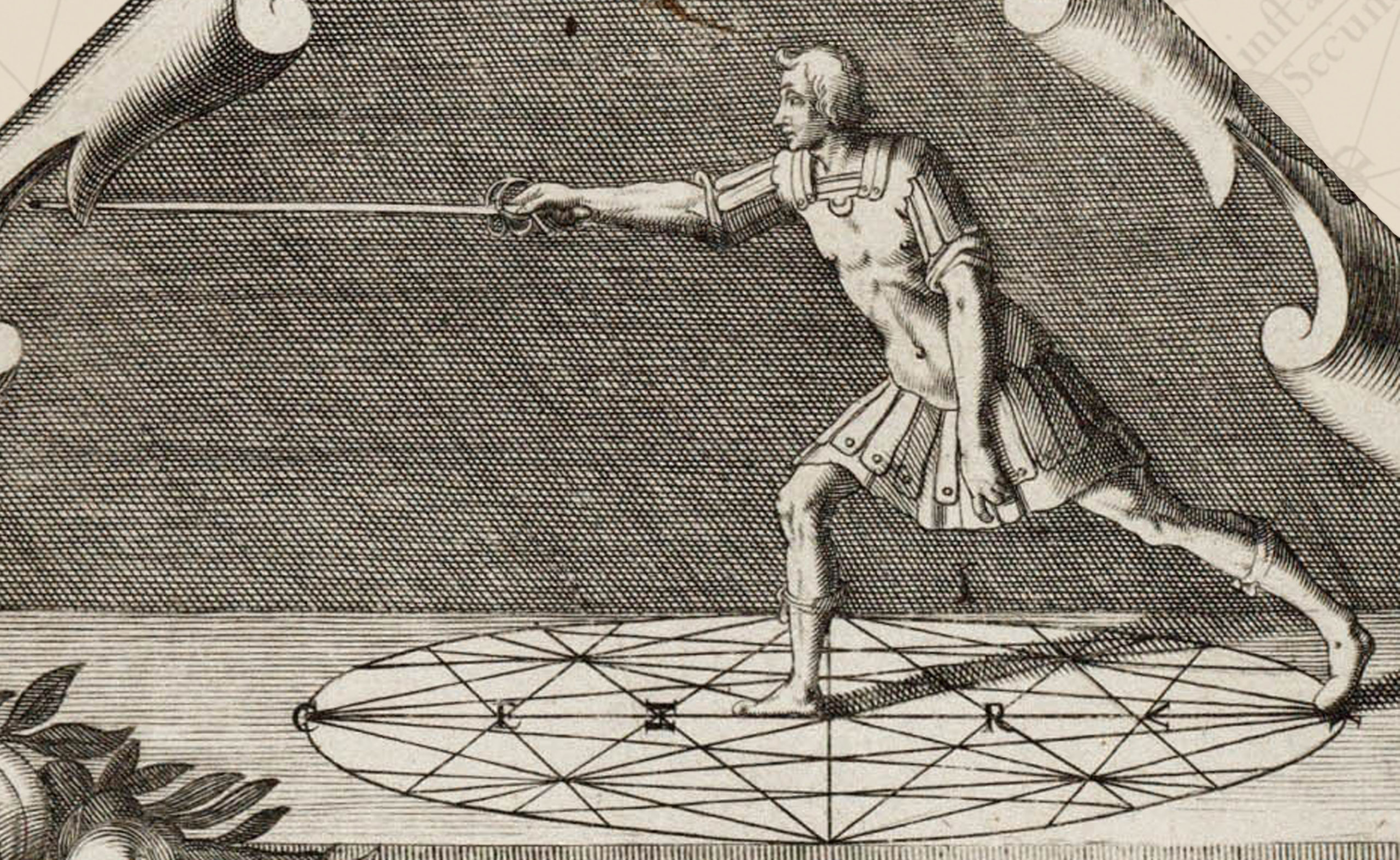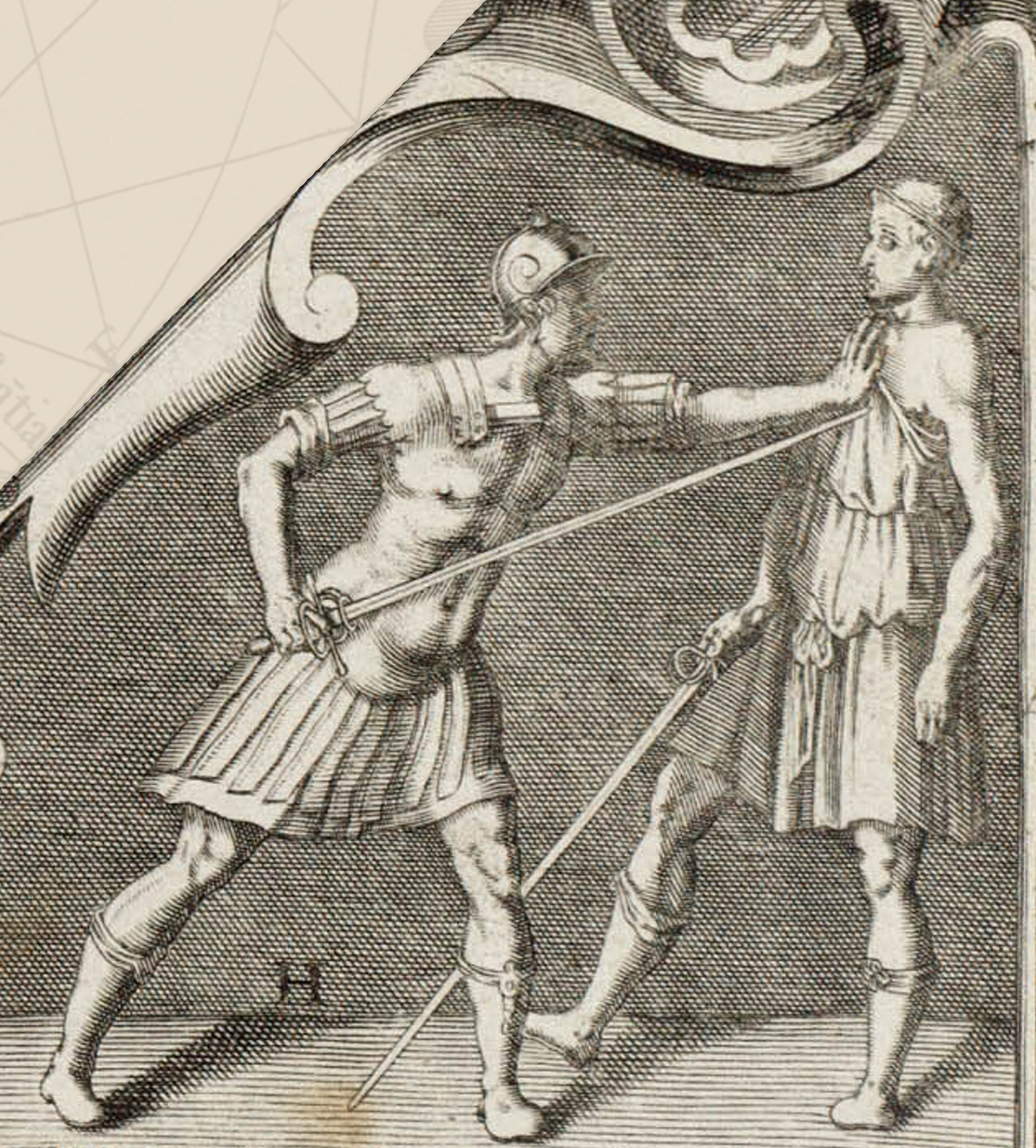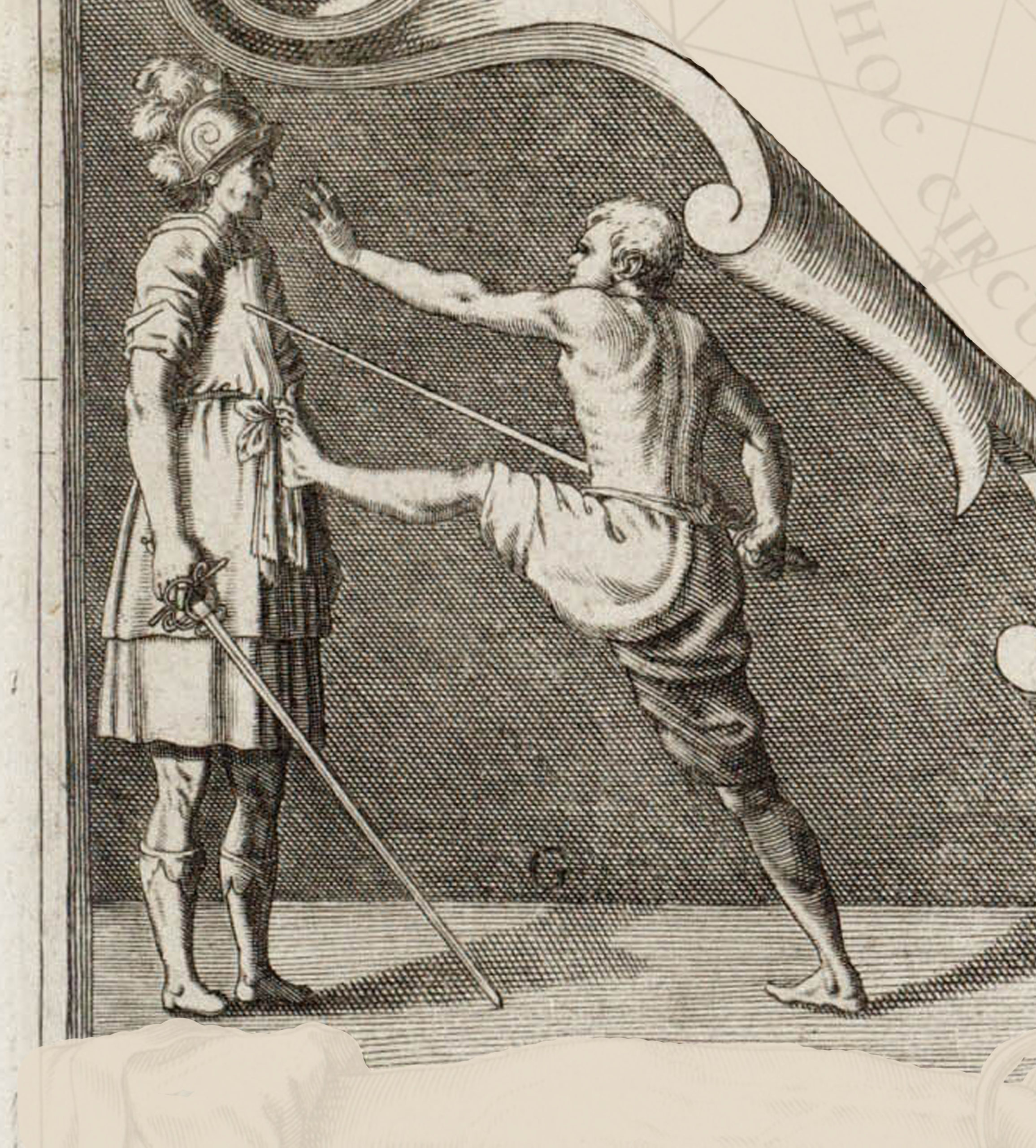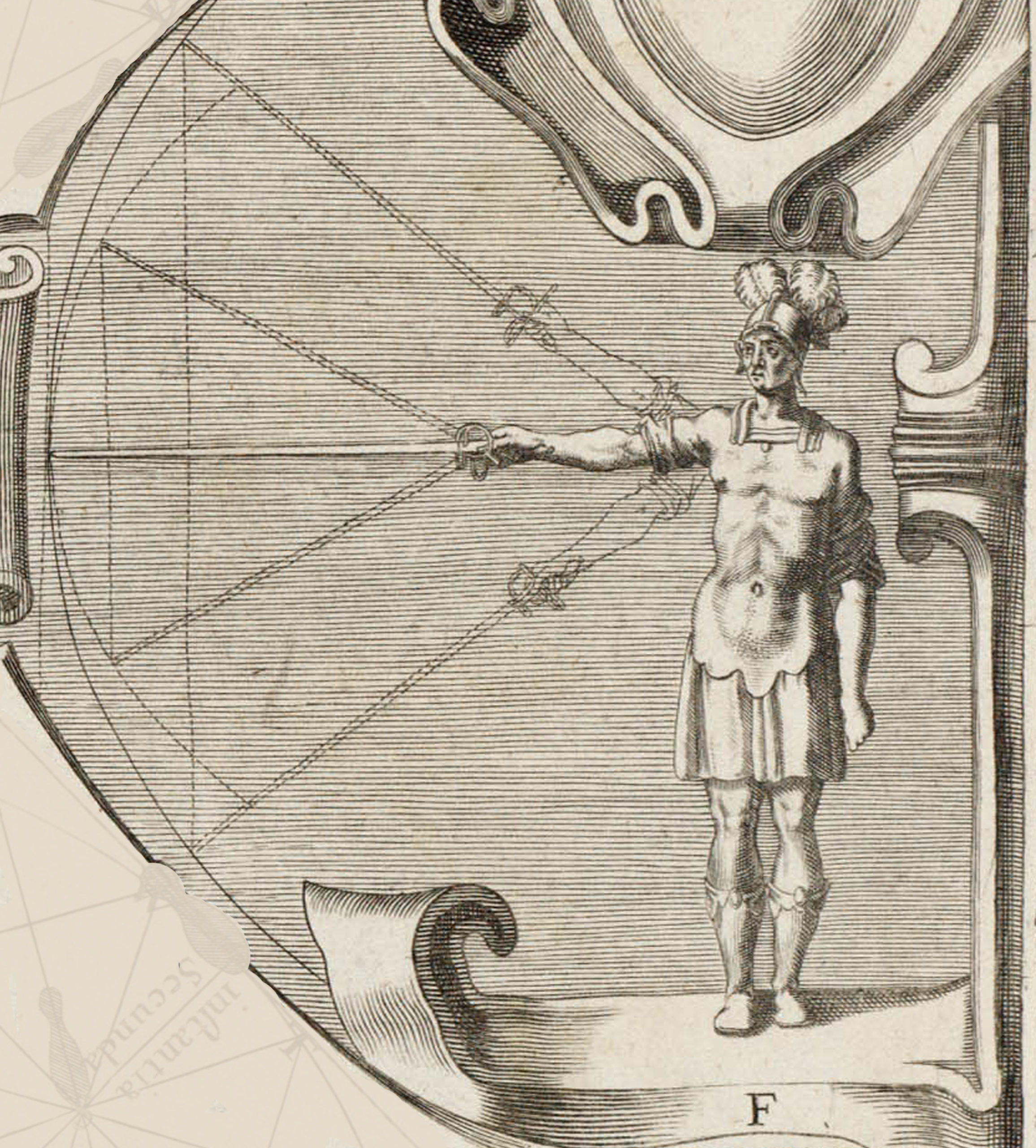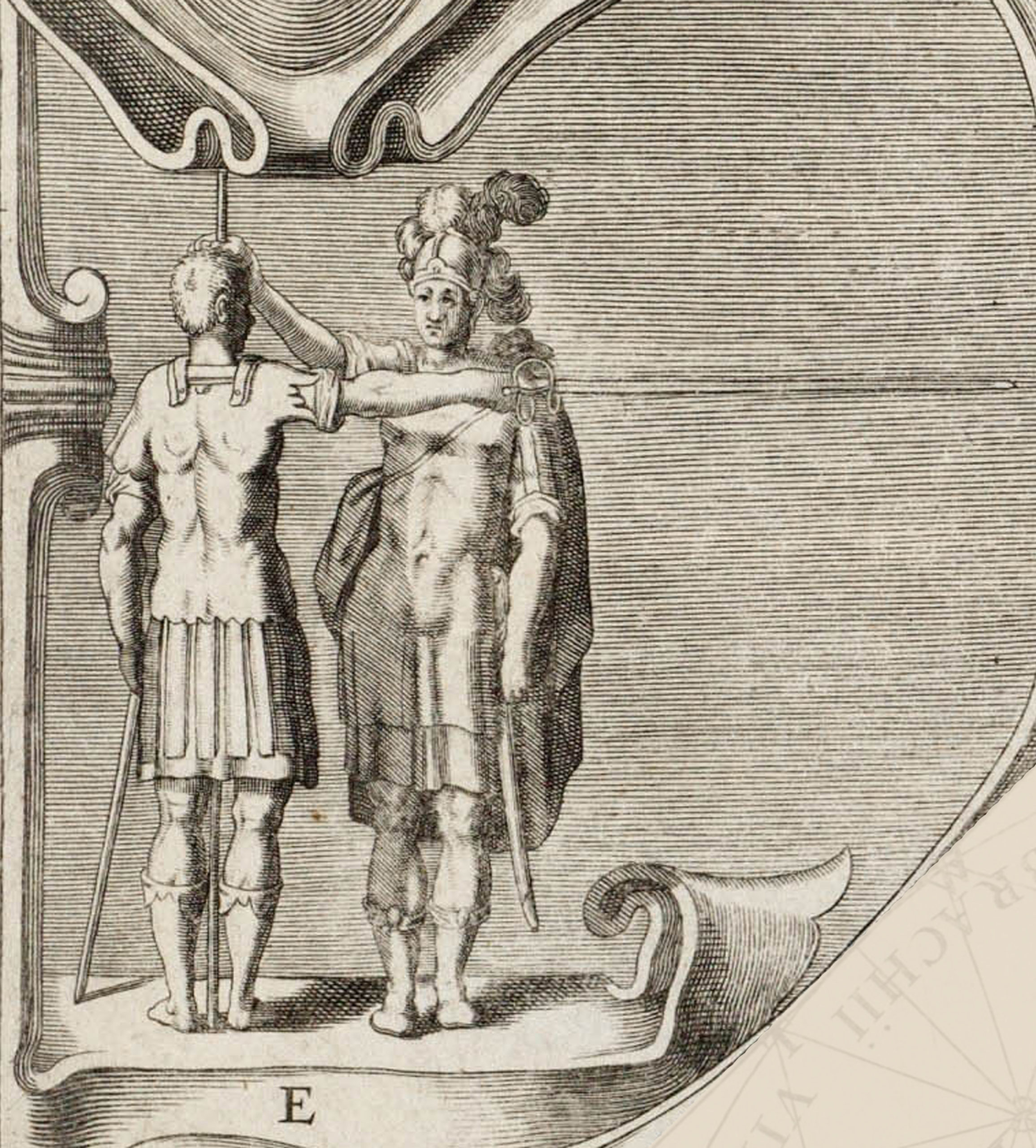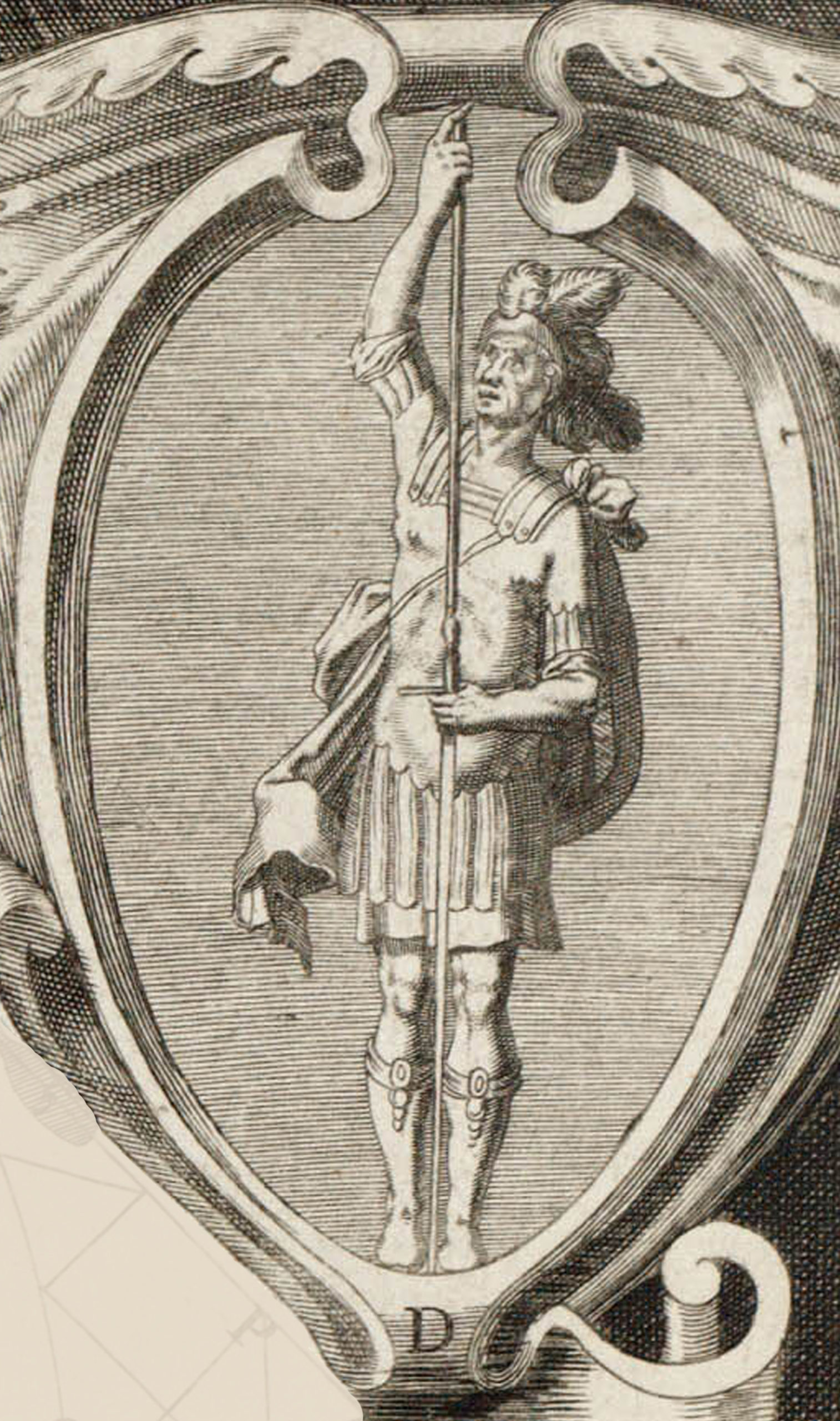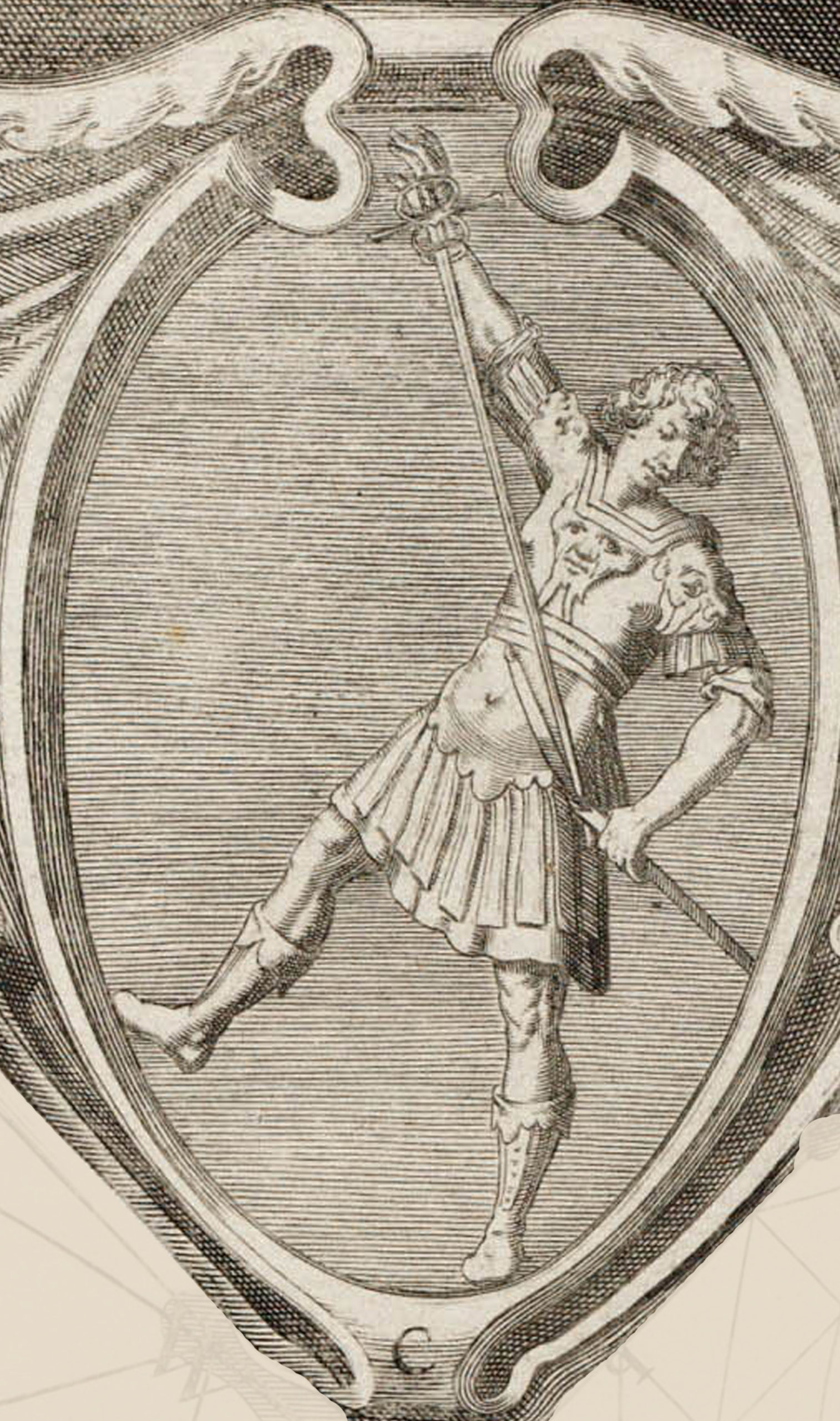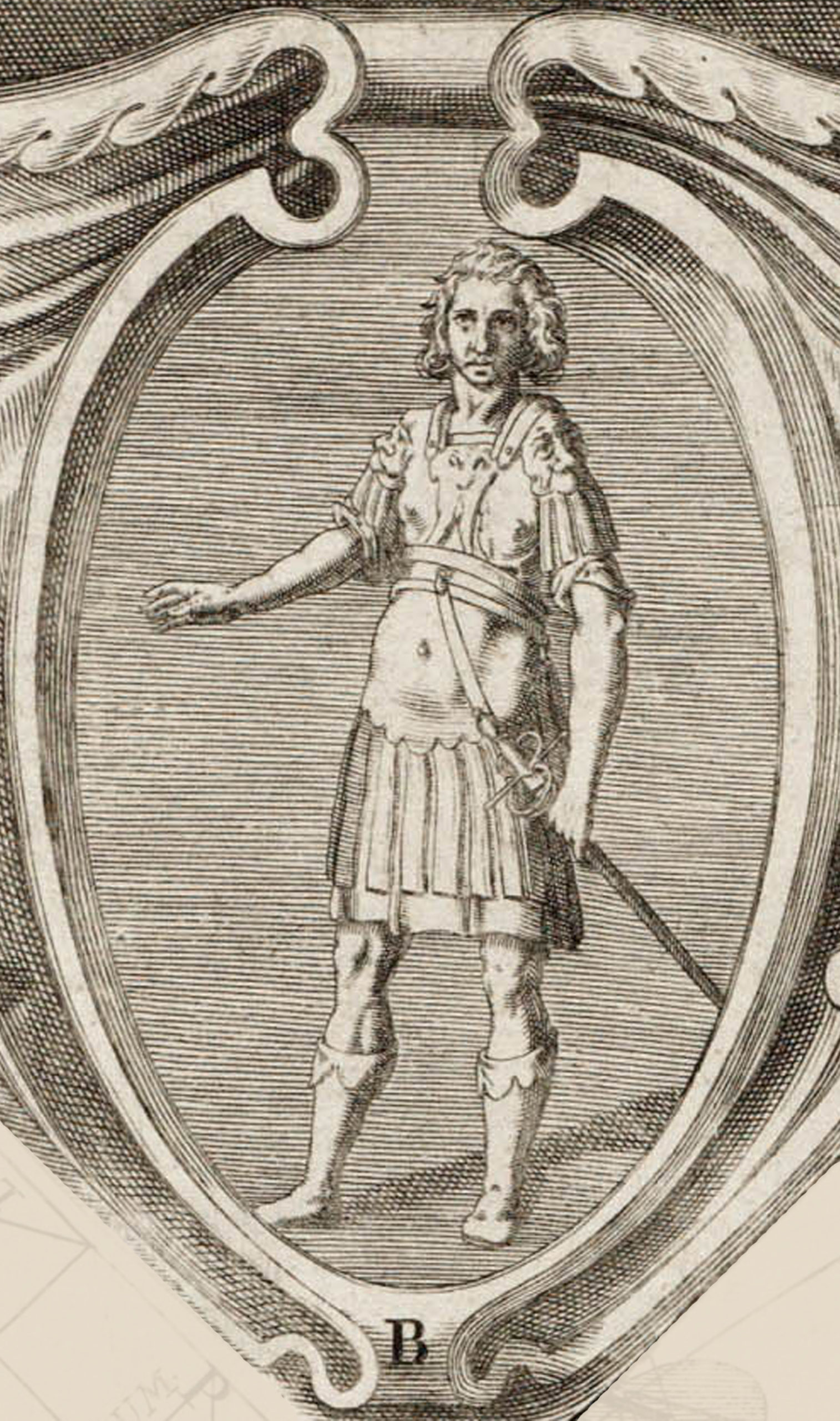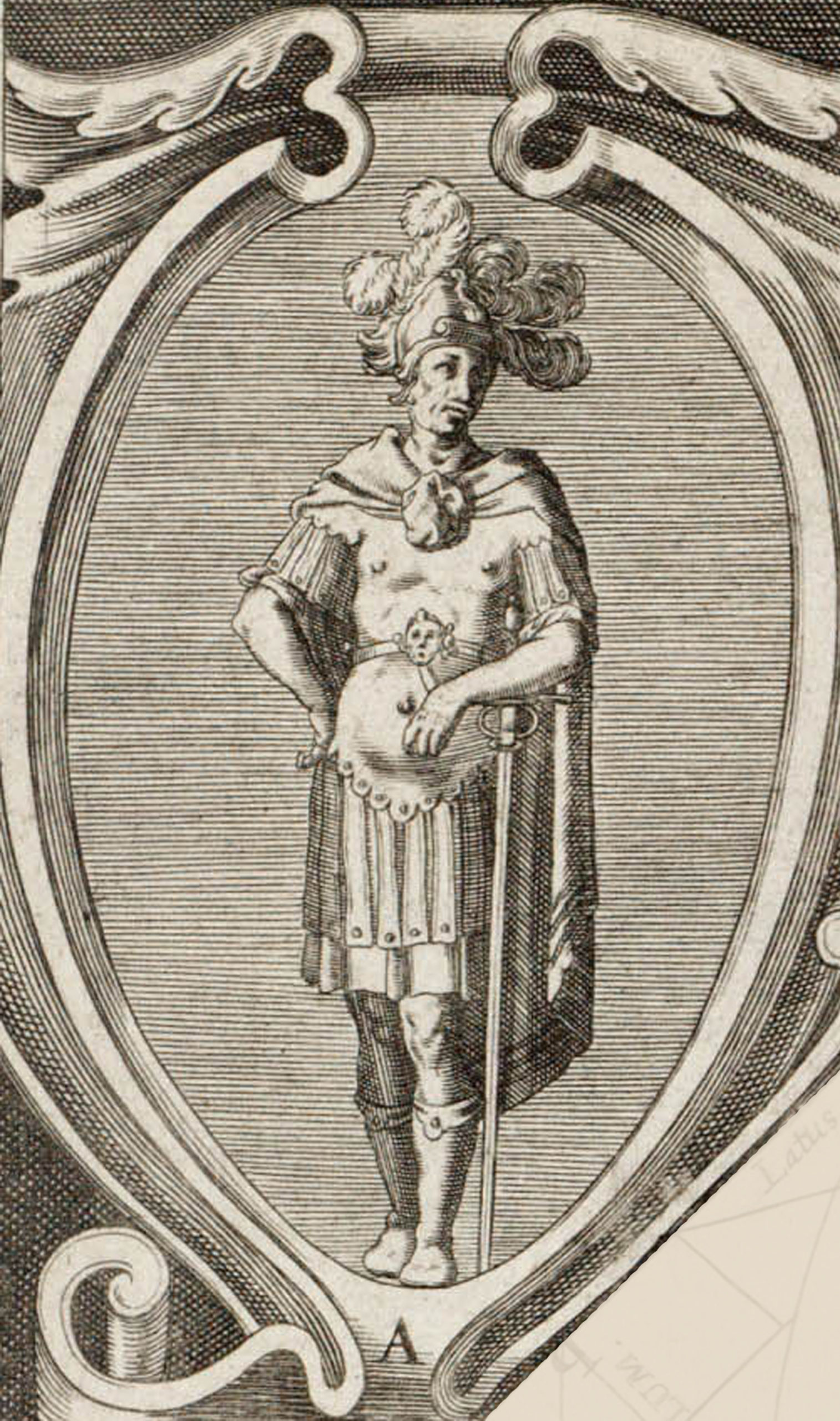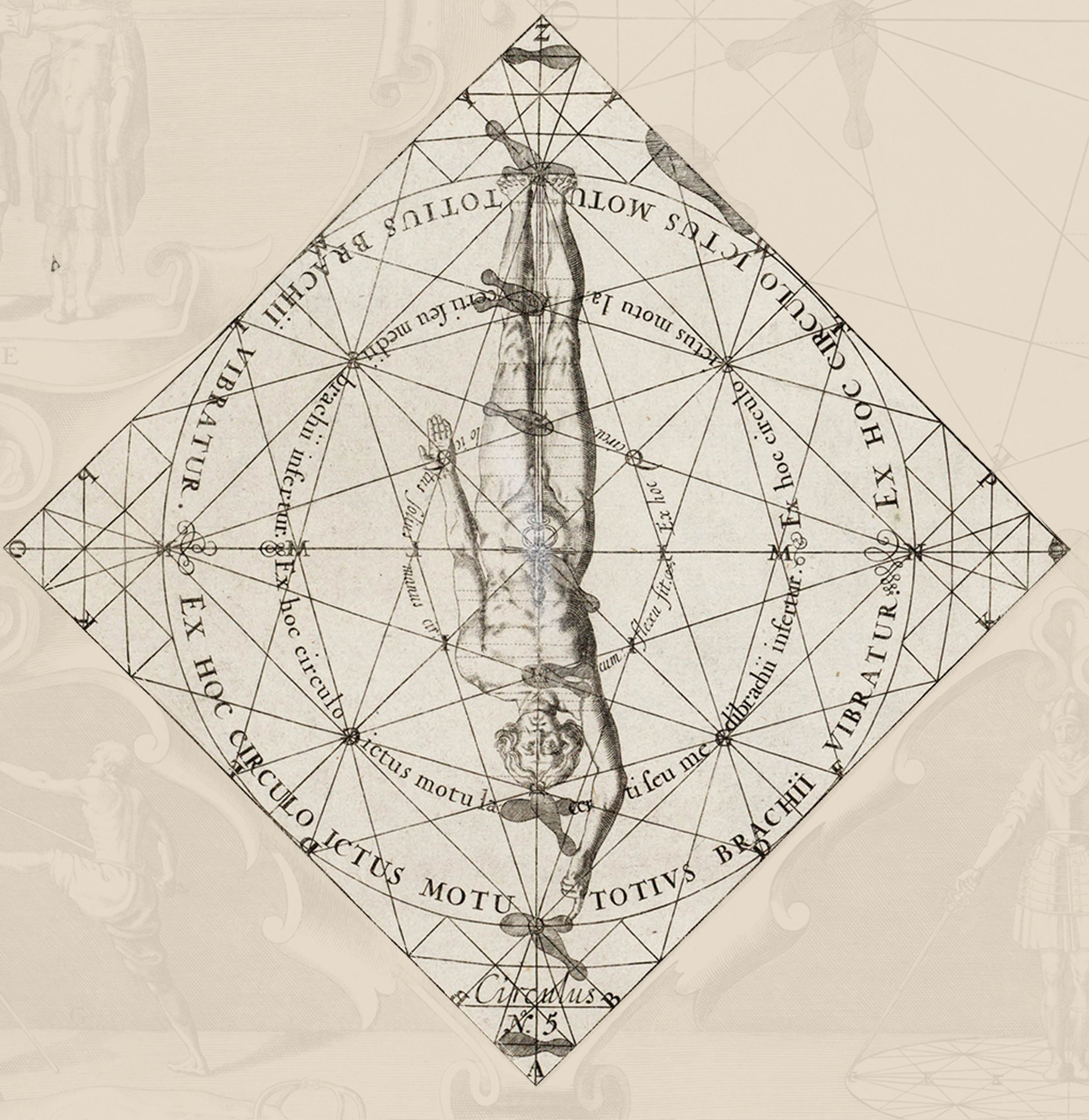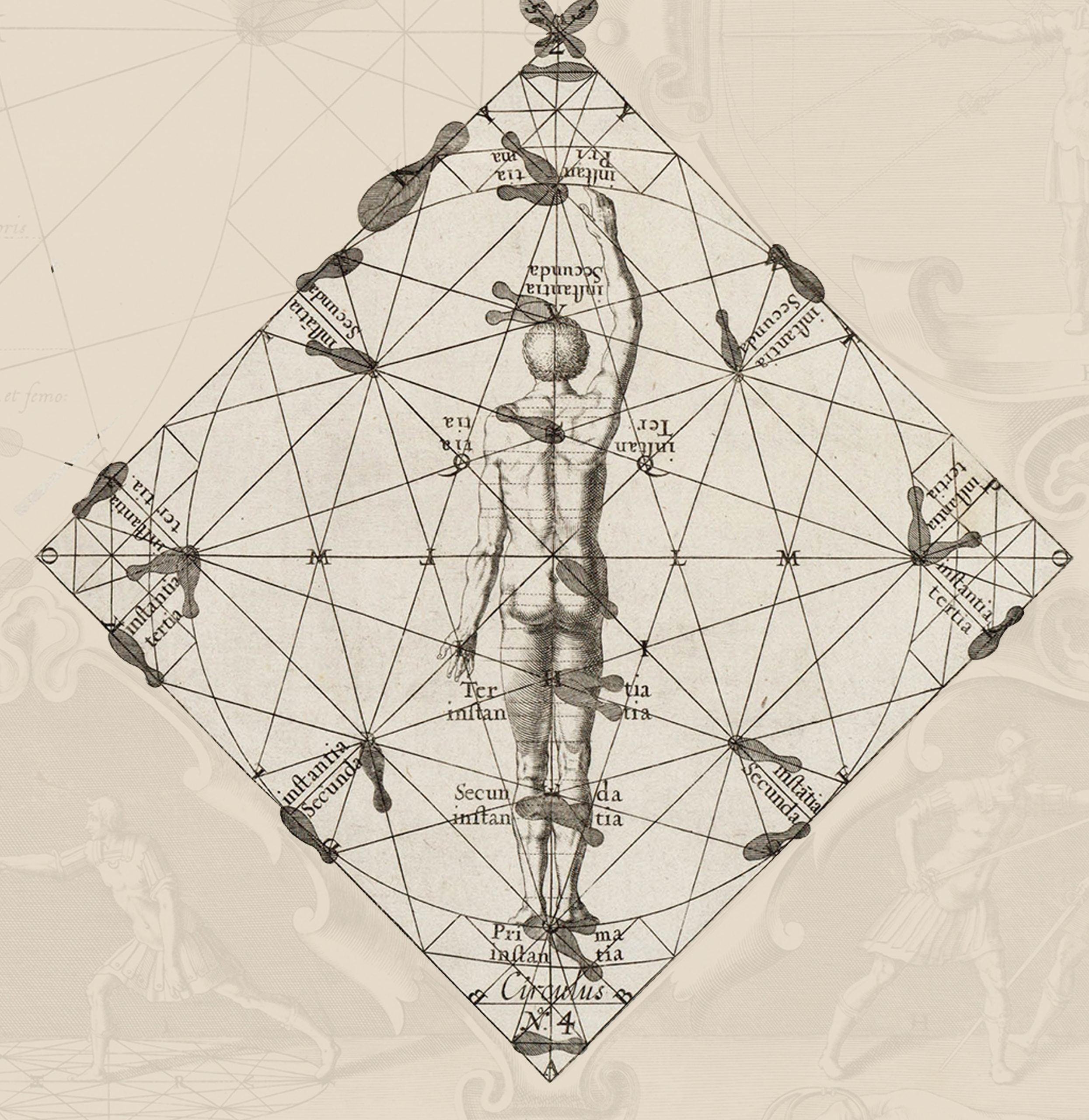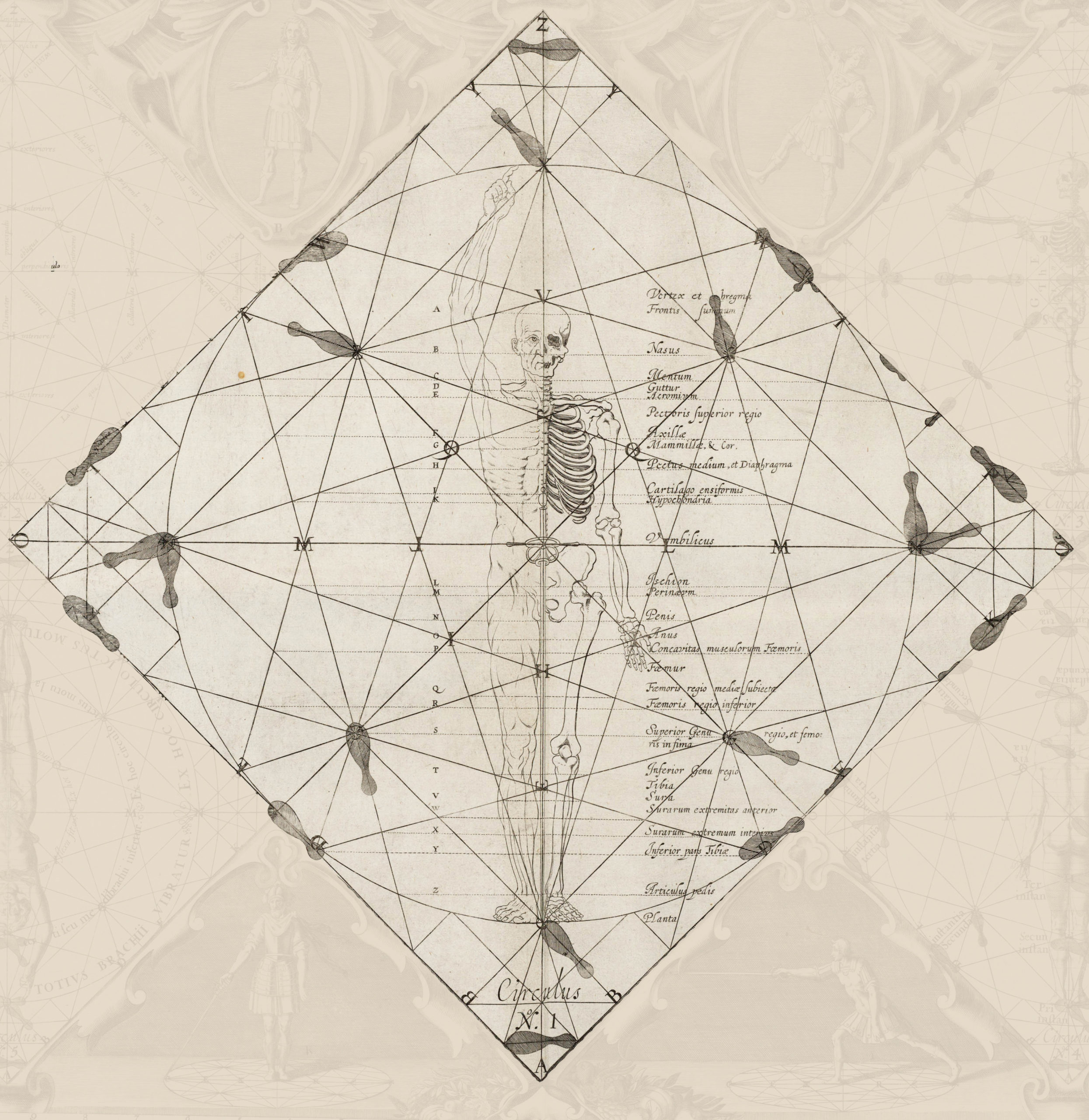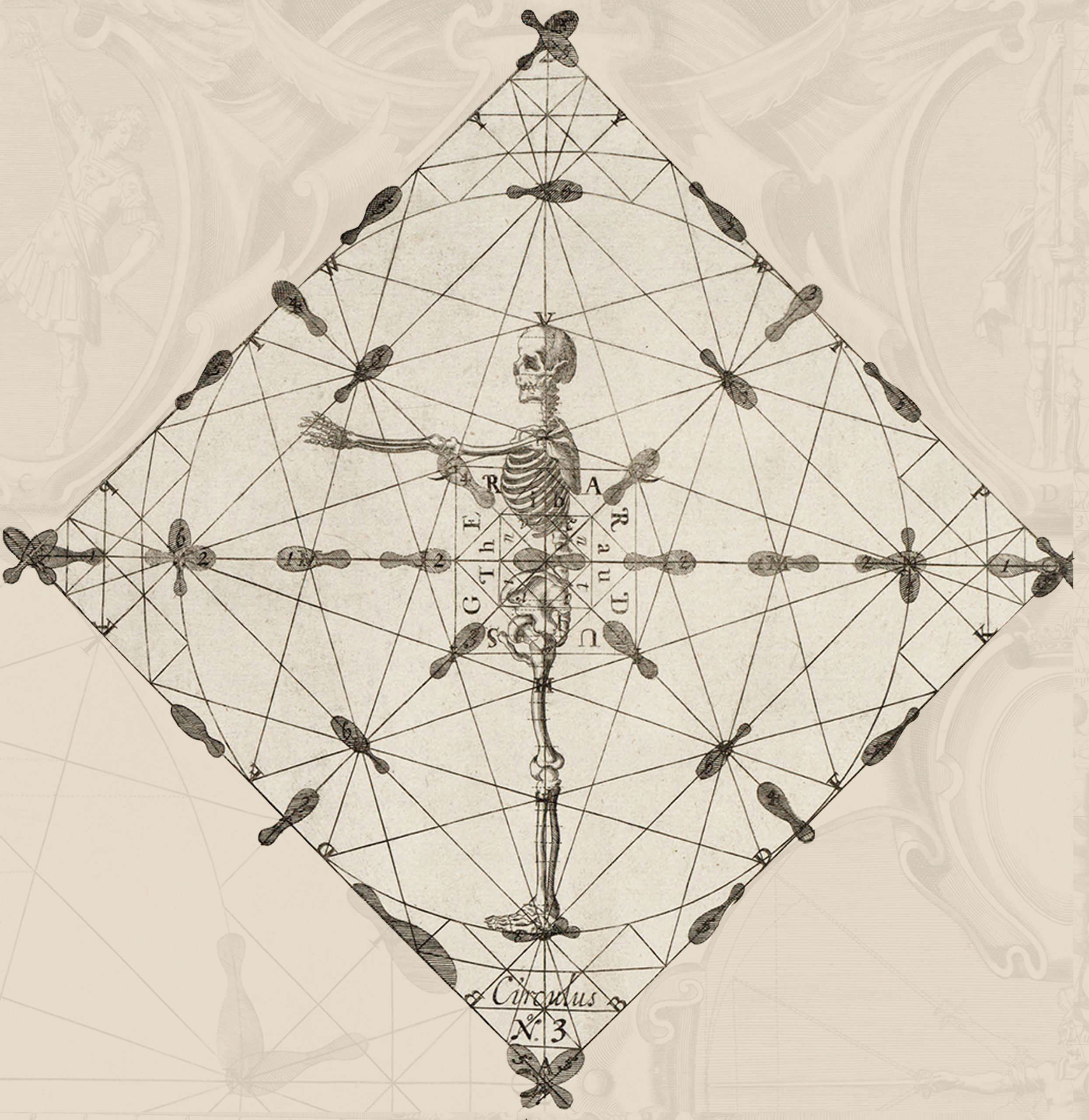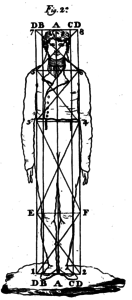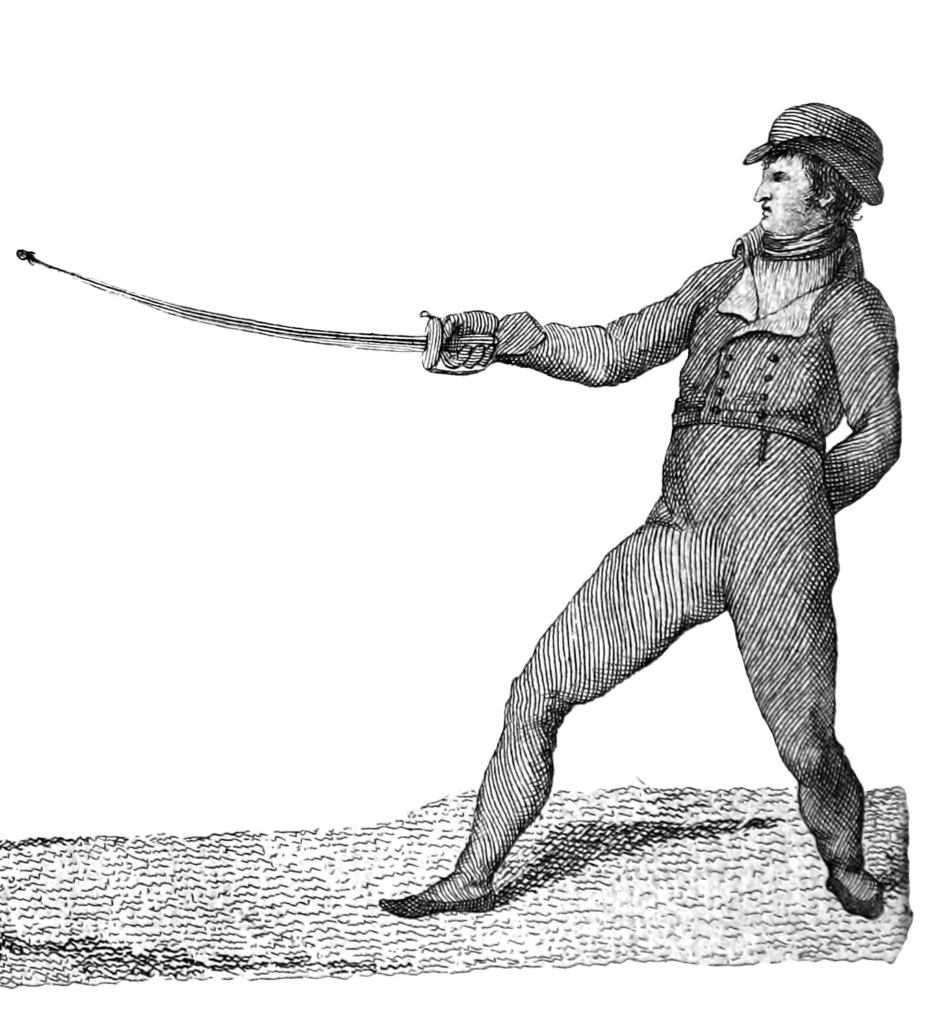349. When I described the offenses by the sabre, I insinuated at the preference they must have relative to the others, and here we see the difficulty that is presented for their repair. But, as this difficulty does not approach impossibility, they will be frustrated many times. In which case, the battle may be ended with a conclusion, established by the one execute such an offense, or by the one who opposes them. In this regard, I will note here the difference that these conclusions admit compared to the previous.
350. The differences in these conclusions, with respect to the attacker are on account of the removal with which the enemy repairs the thrown thrust. This removal can be done by graduating as stated in the treatment of them. You can also do so withdrawing, either with a leap or without, and you can also do it with a movement of diversion*. When you remove, graduate to have the disposition to conclude. The same if you employed a movement of diversion. But if you retire, or withdraw the right foot on its diagonal in the removal, oppose in anticipation of the offense. Therefore, the circumstances to conclude vary in two ways with respect to the removal, and I will proceed in this chapter according to them.
*Movement of diversion is a name given in the skill of arms to those by which method, being below and dominated by the attacker, prevented by this, they nevertheless continue to the path for the offense with the thrust with the union of arms they have taken, making them change direction, with only a little graduation and raising upward with the strong so that he ends his journey at a very distant point from what he had as his object and higher than the supreme plane.
351. As the execution of wounds by the sabre can be done by the line or going out from it, it alters the operation of the removal and therefore it also varies the disposition for concluding. Of these, as with the previous variations, I shall take charge in each of the following paragraphs.
Conclusion on Fourth by the Sabre
352. Imagine the fighters to be in their corresponding places and guards, as I have given them according to what has been described in the thrusts by the sabre. A thrust of fourth is thrown by the line of the diameter. If the contrary repairs it by graduating, taking a similar arrangement for the object to what was given in the removal of low fourth, the conclusion is the same as was explained on the thrust of low fourth (§ 329), passing with this to the points Q and R. If the thrust is thrown leaving the line, you will not be able to go to your defense more quickly than by making a movement of diversion, taking the point of the enemy sabre out over the supreme plane, or near it, on one side of the head, in which case, the conclusion is identical to that made on the diagonal cut (§ 342).
Opposition and Transferring
353. To oppose these conclusions, there are two options of equal security which are, accompanying the removal with a leap back, or by withdrawing the right foot on its diagonal S, in which case the movement of diversion is not necessary, but the graduation with which you can offend by the sabre. If you are to transfer, then note the enemy’s movement to offend by the weapon. Graduate your own, carrying the sabres to low fourth, balancing back at the same time, all very quickly. Under this operation is acquired the same arrangement as is sought for the conclusion on low fourth (§ 304), and so the conclusion is the same, noting that if the enemy parted from the line to offend, you will accompany the removal with a withdrawal of the right foot on S, to make the same conclusion, or that of paragraph 320, with diversion.
Conclusion on Third by the Sabre
354. If you attempt to conclude the enemy, throwing a thrust of third by the sabre, having stepped by the line, take notice of the removal which repairs it. If it is by graduating and carrying the sabres to low third, make the conclusion explained on the thrust of third (§ 332). But, if the wound is opposed by a movement of diversion, conclude as if the offense had been a diagonal reverse to the head (§ 345). When the offense is attempted leaving the line, the opponent most remove with first, in which case, read the conclusion on the thrust of first (§ 235).
Opposition and Transferring
355. For the opposition to these conclusions, make the leap back or withdraw the right foot on the diagonal S, graduating at the same time. With this you will have the necessary disposition to injure by the weapon. However, if you are to transfer, heed if the enemy threw the thrust down the line. In this case, carry the sabres with graduation and balance to low third, and conclude on it (§ 310). But, if they departed from the line to throw, remove with first or with a movement of diversion. In the first case, conclude on first (§ 314), and in the second, on high third (§ 323).
Conclusion on First and Second by the Sabre
356. When you try to conclude on the thrust of first or second by the weapon on the line, take note that the enemy cannot repair these offenses except with the removal of their name or with low fourth, extending the arm to the second, and with the general low third as said in paragraph 335 for the first. However, they have to be accompanied by balancing back and the conclusion will be that said on these removals. But, to inflict these offenses, the contrary leaving the line, will be on the right side for the second, and the left for the first. In this case, the second is repaired with extended low fourth, and the first with low third. Therefore, the conclusions are already explained for these removes which the enemy is obligated to make in order to conclude them.
Opposition and Transferring
357. To oppose these conclusions, accompany the removal with a leap back, or take the right foot point S to offend. However, if you intend to transfer, do as I said when I treated of the conclusions on each of the removals that take place here, forming them with agility.

